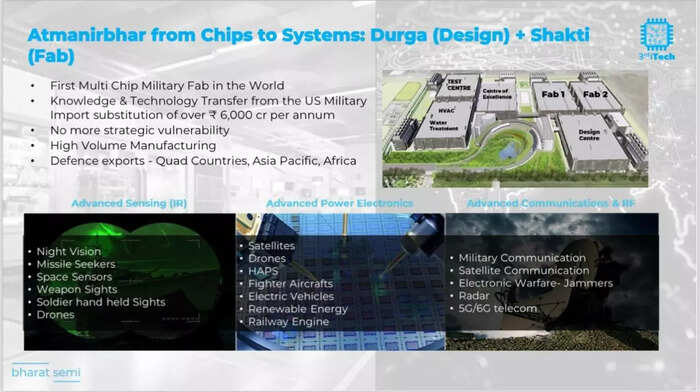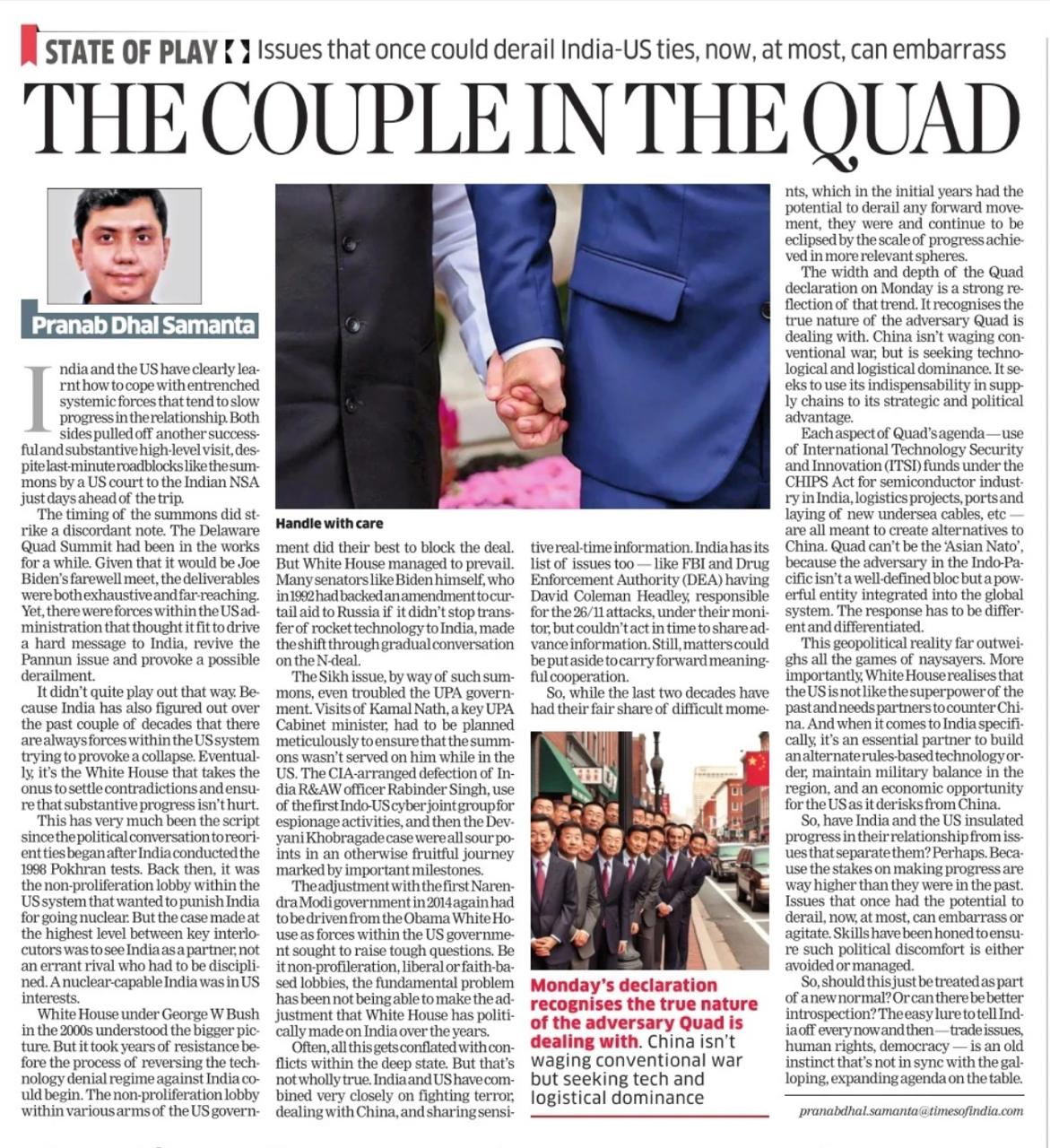lel, a full year with nary a movement reported, such relevance, much importance
a sad necro bump for you buddy, you are likely to be put in cold storage for at least the next 3 years
https://www.aspistrategist.org.au/quad- ... -security/
Quad-ASEAN trade cooperation key to regional economic security
Japan, India and Australia’s converging interests would be fortified by a Japan-ASEAN-Australia-India economic corridor championed by the United States.
Japan and India—the world’s fourth- and fifth-largest economies, respectively—are determinedly deepening their bilateral partnership amid Chinese mercantilism and US President Donald Trump’s tariff turbulence. The prime ministers of Japan and India, at the 15th Japan-India Annual Summit in Tokyo this August, hailed their Special Strategic and Global Partnership while articulating a ‘joint vision for the next decade’. The two nations can best realise this vision by bookending an economic corridor from Japan to India through the Association of Southeast Asian Nations (ASEAN) and Australia, advancing both Quad and Indo-Pacific economic prosperity and security.
Conversely, Australia is keen to diversify its markets for mineral, energy and agricultural exports away from over-reliance on China. An economic corridor involving Japan, ASEAN, India and the US would offer a fitting alternative.
The US, preoccupied with sorting its trade relations with friends and foes alike, has yet to put forward a positive Indo-Pacific economic agenda. While professing China as its main adversary and the Indo-Pacific as its primary theatre of concern, the US finds itself occupied with Ukraine and Middle East matters. However, it has a ready and tested remedy to right the oversight. The US was indispensable in the launch of the India-Middle East-Europe Economic Corridor (IMEC), celebrated by Trump during Modi’s state visit early this year as ‘one of the greatest trade routes in all of history’ with collective investments in ports, railways, and submarine cables from India to Italy. The US can play just as consequential a role in promoting the establishment of the Japan-ASEAN-Australia-India Economic Corridor (JAAI) as another beautiful trade route from Japan to Indonesia to India.
The Quad nations’ worthy individual and collective economic initiatives need a regional manifestation of impact, imagination and inspiration. Japan’s and India’s burgeoning bilateral partnership and regional coordination; Australia’s critical need to develop and diversify its natural resources markets; ASEAN’s Outlook on the Indo-Pacific; and the US’s positive economic engagement in Indo-Pacific would be magnified to an impact far greater than their many parts through the launch of the JAAI. The JAAI would be a natural, equal partner to the IMEC, launched by India, the US, the United Arab Emirates, Saudi Arabia, the European Union, Italy, Germany and France at the G20 Summit in Delhi in 2023.
The Quad nations—Australia, India, Japan, and the US—have, for the most part, entered into or are negotiating bilateral economic or trade agreements among themselves, but have yet to find a robust regional application to counter China’s accelerated economic encroachment. All four repeatedly reaffirm ASEAN centrality for a free and open Indo-Pacific but have yet to announce a demonstrable project to put it in motion. ASEAN nations, in their own Indo-Pacific Outlook, call for greater connectivity across the region. India has ambitious plans to construct road and rail networks across Myanmar, Thailand and Vietnam. Australia is most keen to diversify away from the near Chinese monopsony of its minerals wealth.
JAAI’s fundamental purpose would be to revitalise historic trade, commerce, and cultural flows between India and Japan, and the ASEAN region, respectively. In his recent book, The Golden Road: How Ancient India Transformed the World, historian William Dalrymple provides a vivid account of India’s extensive and profound economic and cultural influence across the present ASEAN region for thousands of years.
Specifically, JAAI should pursue three reinforcing lines of effort. First, it can substantially augment Quad commerce among itself and with ASEAN through a network of ports, railways and sea lanes, while additionally constructing an overland transit route across the Irrawaddy and Mekong watersheds from India to Vietnam to complement ports and maritime traffic. Second, it can accommodate special provisions for incorporating Pacific island economies into the JAAI mainstream. Papua New Guinea and New Zealand, as founding signatories of JAAI, could lead this effort. Third, collective action is needed to ensure maritime security along the JAAI, with agreed-upon operational modalities to address extreme weather events, piracy, illegal fishing and other impediments to freedom of navigation.
Analogous to the IMEC, submarine digital cables backed by expanding cloud and satellite technologies—which are ushering in a new age of digital economy and telecommunications—present the most promising avenues to demonstrate early achievements under JAAI. The US and Australia, acting in consonance, can deliver energy security agreements to many of the potential JAAI member states. The Quad, South Korea and Taiwan’s coordinated off-take agreements and associated financing in developing critical minerals industries in Australia should be a high JAAI priority. Under JAAI, equal prominence should be devoted to energy, digital and tourism accessibility for the Pacific island economies.
JAAI magnifies synergies between India’s domestic and regional development goals. Economic development and improved connectivity of India’s hilly northeastern region are critical to the Modi government’s domestic agenda and planned overland transit routes to Vietnam. The Japan-India infrastructure partnership, bolstered by joint ventures in modernising India’s national trade and transit corridors and the development of India’s northeastern regions, is well-positioned to lead the way in connecting India’s northeast to Vietnam through overland, modern commercial thoroughfares.
wow, all the conveniences in 1 simple package, can india sign up twice??
JAAI, with the IMEC, represents bottom-up, self-interest-driven regional initiatives to connect the economies of the Indo-Pacific with the Mediterranean-Atlantic in the post-globalisation era. Both JAAI and the IMEC collectively offer a pragmatic approach to optimising connections between free and open economies, societies and spaces, while providing a formidable counterweight to China’s Belt and Road Initiative. The Quad nations have a historic opportunity in JAAI to give shape to their regional rhetoric for a free and open Indo-Pacific. Japan, India and Australia should lead the way with the US’s full support. US and Quad interests in the Indo-Pacific necessitate pragmatic collective action. JAAI represents such an action. The time to act is now.
it sure is... though might not be in the same vein that the author imagines it to be

